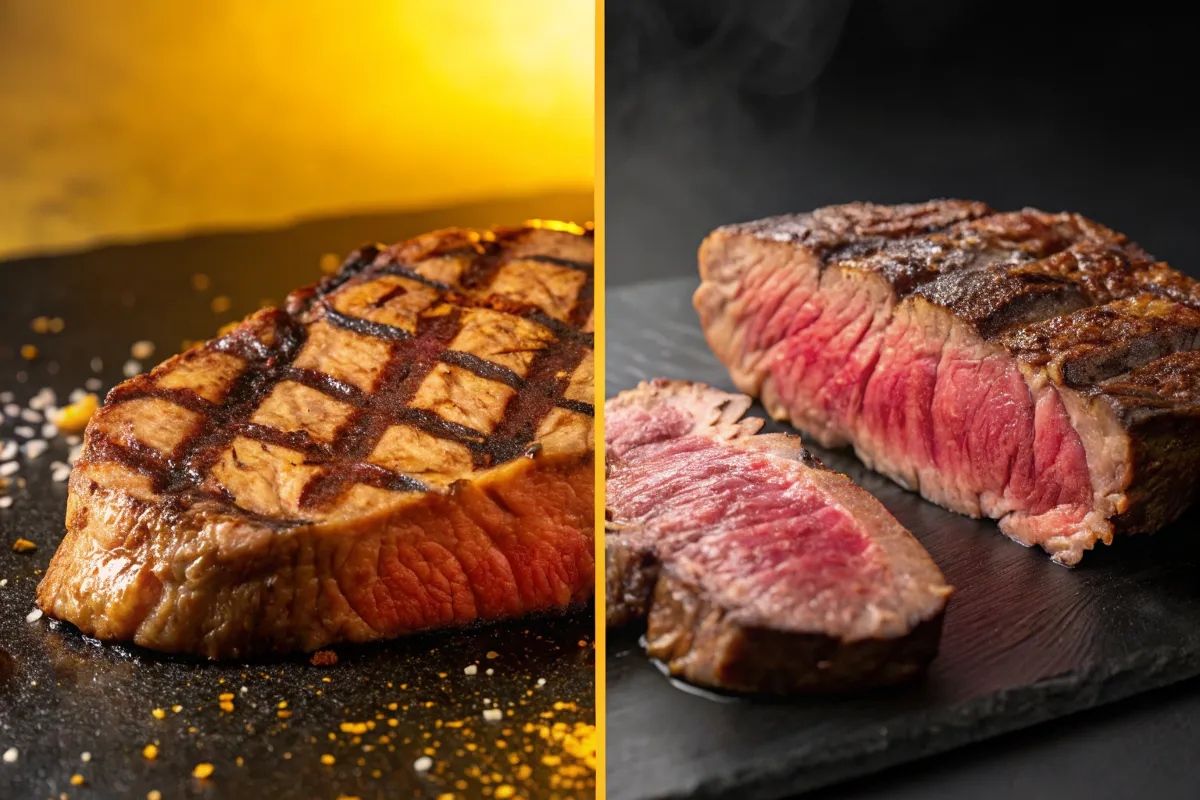Introduction : How does Denver steak compare to ribeye?
Choosing the right steak for your next meal can feel overwhelming, especially when comparing popular cuts like Denver steak and ribeye. A common question people ask is, “How does Denver steak compare to ribeye?” Both steaks have unique characteristics, and understanding their differences can help you pick the perfect option.
Denver steak is a tender, flavorful cut that comes from the chuck area of the cow. It’s relatively new to the steak world, but its rich beefy taste and affordability have made it a rising star. Ribeye, on the other hand, has long been a favorite. Known for its luxurious marbling, buttery texture, and premium flavor, it remains one of the most popular steak choices available.
By learning about these two cuts, you’ll discover their unique qualities and how to prepare them for the best results. Whether you’re a seasoned steak enthusiast or just starting to explore different cuts, this article will guide you. From flavor and tenderness to cooking methods, we’ll cover everything you need to know about Denver steak and ribeye.
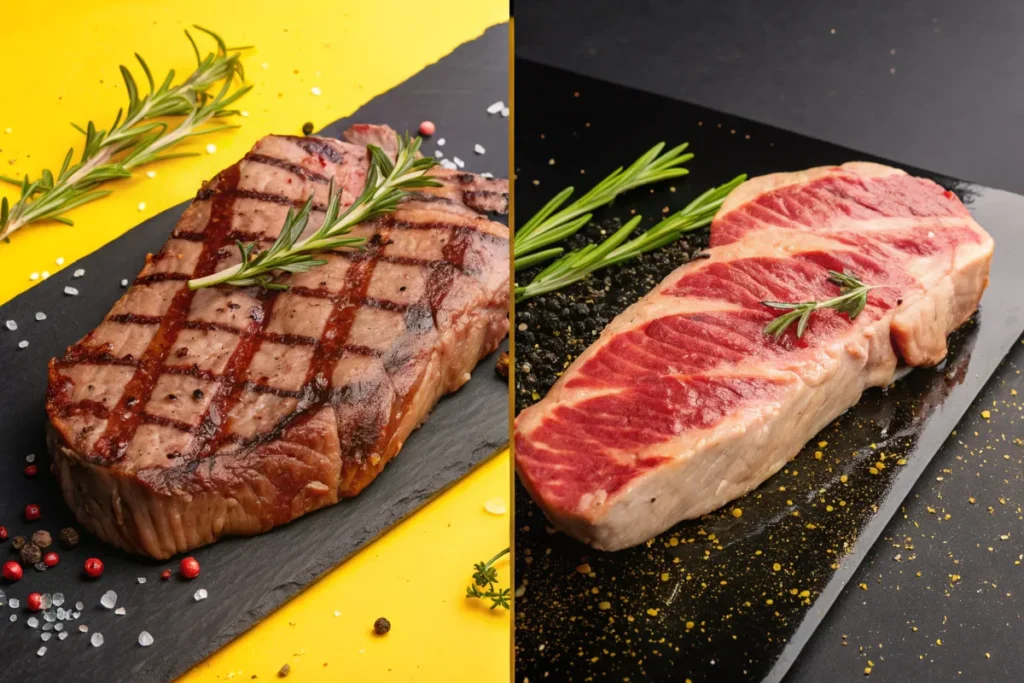
Table of contents
- Introduction : How does Denver steak compare to ribeye?
- How Does Denver Steak Compare to Ribeye?
- Key Differences Between Denver Steak and Ribeye
- Cooking Techniques for Denver Steak and Ribeye
- Why Choose Denver Steak Over Ribeye (Or Vice Versa)?
- Denver Steak vs Ribeye: Which One Should You Choose?
- FAQs About How does Denver steak compare to ribeye?
- Conclusion: How Does Denver Steak Compare to Ribeye?
How Does Denver Steak Compare to Ribeye?
When comparing Denver steak to ribeye, the differences boil down to factors like marbling, flavor, tenderness, and price. Let’s break these elements down to see how they differ and why they’re both popular choices among steak lovers.
Characteristics of Denver Steak:
- Marbling: Denver steak has a moderate amount of marbling, contributing to its beefy flavor.
- Texture: It’s tender but slightly chewier than ribeye.
- Flavor Profile: Known for its rich, hearty flavor, Denver steak is ideal for those who prefer a bold, beef-forward taste.
- Price Point: Often more affordable than ribeye, Denver steak offers great value for the money.
Best Cooking Methods for Denver Steak:
- Grilling: Perfect for a quick sear over high heat.
- Pan-Searing: Creates a flavorful crust while locking in juices.
- Sous Vide: Ensures even cooking and tenderness.
What is Denver Steak?
Denver steak is a hidden gem in the steak world, offering a delightful combination of flavor and tenderness. This cut is taken from the underblade section of the chuck primal, a part of the cow that is often associated with tougher cuts. However, the Denver steak is different, as it stands out for being surprisingly tender.
One reason for its rising popularity is its affordability. Denver steak is often more budget-friendly compared to premium cuts like ribeye. Additionally, its rich, beefy flavor appeals to those who enjoy bold-tasting meat. Because of these qualities, Denver steak is a fantastic choice for both casual dinners and special occasions.
When it comes to cooking, Denver steak is versatile. It works wonderfully when grilled, pan-seared, or even cooked sous vide. For best results, it’s important to cook it over high heat to create a flavorful crust while keeping the inside juicy and tender. With proper preparation, this cut can rival more expensive steaks in both taste and texture.
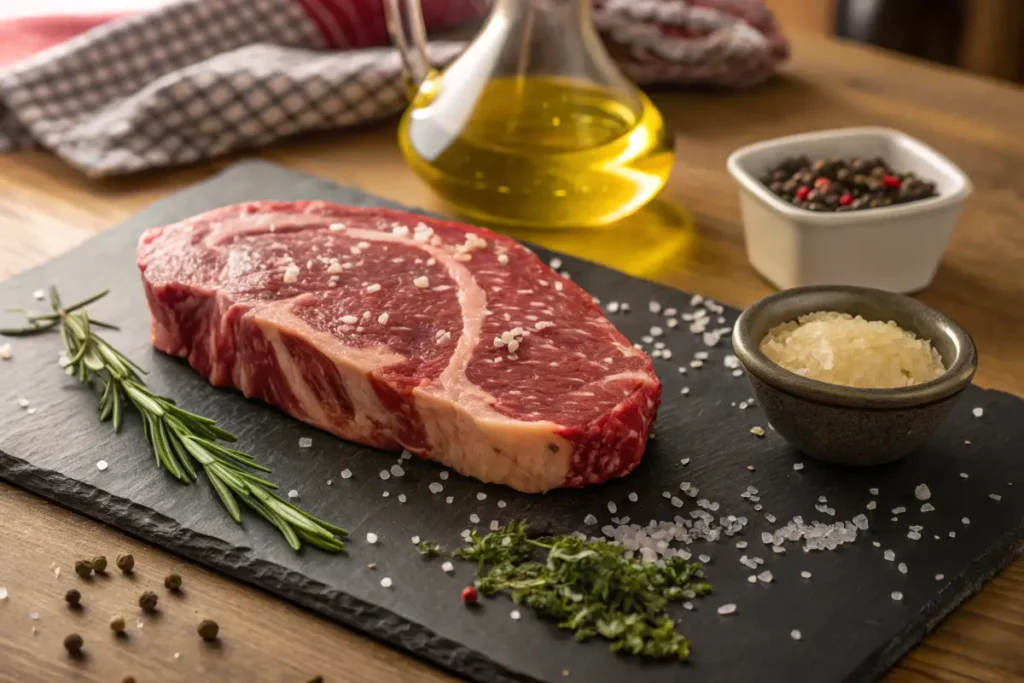
What is Ribeye?
Ribeye is one of the most well-known and beloved steak cuts, prized for its incredible marbling and tenderness. This cut comes from the rib primal, which is located near the upper rib section of the cow. Its high fat content makes it one of the juiciest and most flavorful steaks you can buy.
Unlike Denver steak, ribeye is famous for its luxurious texture and buttery mouthfeel. The marbling, or fat streaks within the meat, melts during cooking, infusing the steak with rich flavor. As a result, ribeye delivers a premium dining experience that steak enthusiasts often rave about.
Additionally, ribeye is extremely versatile when it comes to cooking methods. Whether you grill it, pan-sear it, or broil it in the oven, ribeye retains its tenderness and juiciness. Its forgiving nature makes it a great choice for both novice and experienced cooks. While ribeye is typically more expensive than Denver steak, its quality and flavor justify the higher price for many people.
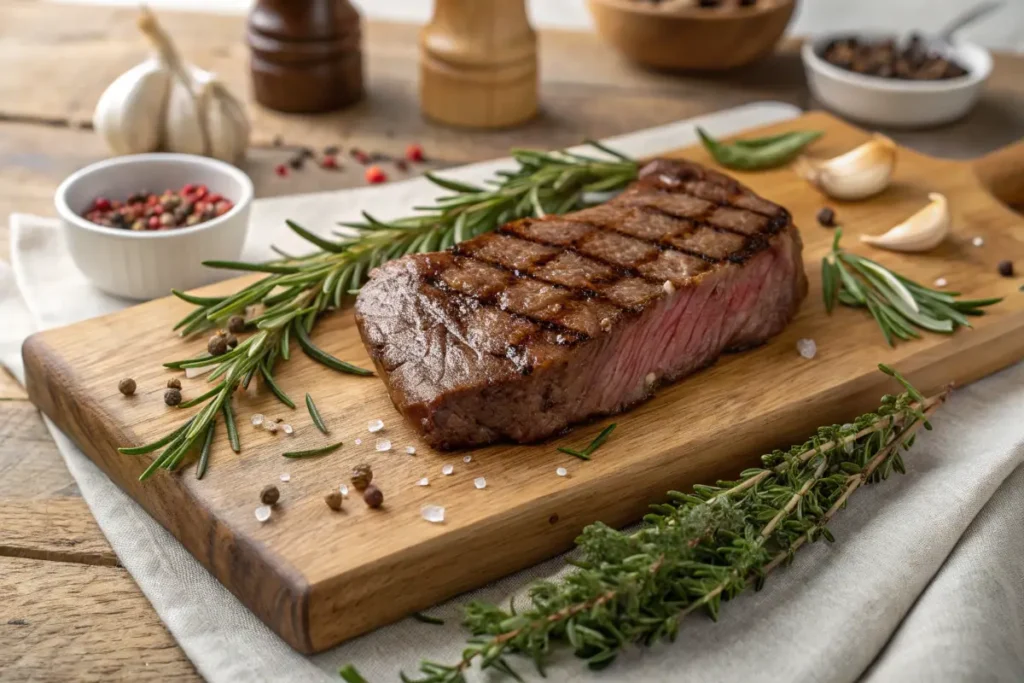
Characteristics of Ribeye:
- Marbling: Ribeye is famous for its high fat content, resulting in exceptional juiciness and flavor.
- Texture: Incredibly tender with a buttery mouthfeel.
- Flavor Profile: The marbling melts during cooking, infusing the meat with a rich, almost nutty flavor.
- Price Point: Ribeye tends to be more expensive due to its premium quality.
Best Cooking Methods for Ribeye:
- Grilling: Perfect for bringing out its smoky, charred flavors.
- Broiling: A great way to achieve a crisp crust in the oven.
- Reverse Sear: Slowly cooks the steak, then finishes with a high-heat sear.
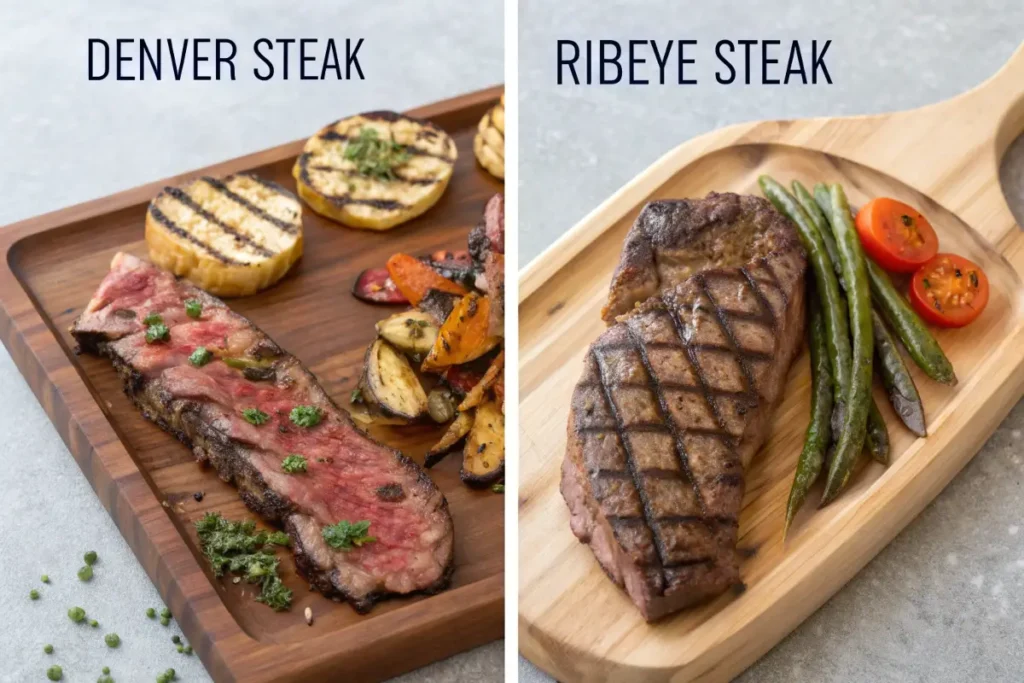
Key Differences Between Denver Steak and Ribeye
| Aspect | Denver Steak | Ribeye |
|---|---|---|
| Cut Location | Chuck (underblade section) | Rib primal (upper rib section) |
| Marbling | Moderate | High |
| Flavor | Rich and beefy | Buttery and luxurious |
| Tenderness | Tender but slightly chewy | Extremely tender |
| Price | Affordable | Expensive |
Cooking Techniques for Denver Steak and Ribeye
When it comes to cooking Denver steak and ribeye, the methods you choose can make a huge difference in flavor, tenderness, and overall satisfaction. Both cuts perform well with certain techniques, but each has specific requirements to bring out its best qualities. Let’s explore how to cook these steaks to perfection.
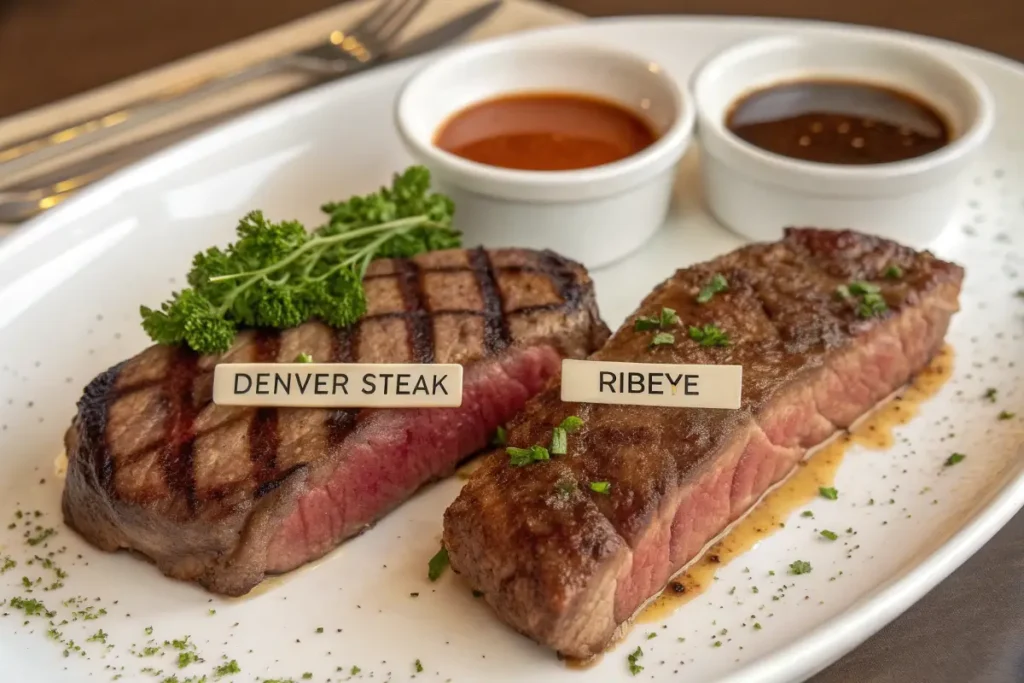
Best Ways to Cook Denver Steak
Denver steak is a versatile cut that responds well to a variety of cooking methods. However, because it has less marbling than ribeye, it’s important to avoid overcooking it. Here are the best ways to prepare Denver steak:
- Grilling: Grilling over high heat is ideal for Denver steak. The intense heat quickly sears the outside, creating a flavorful crust, while keeping the inside tender. For best results, cook the steak to medium-rare and let it rest before slicing.
- Pan-Searing: This method is great for achieving a crisp crust. Use a heavy skillet, such as cast iron, and heat it until it’s smoking hot. Add the steak and sear for about 2–3 minutes per side. A quick pan sauce can also elevate the flavor.
- Sous Vide: If you want precise control over doneness, sous vide is an excellent option. Cook the steak in a vacuum-sealed bag at your desired temperature (usually around 130°F for medium-rare), then finish it with a hot sear in a pan or on the grill.
Because Denver steak has a bold, beefy flavor, it pairs wonderfully with simple seasonings like salt, pepper, and garlic. Additionally, marinades with acidic ingredients like vinegar or citrus can help tenderize the meat while adding extra depth of flavor.
Best Ways to Cook Ribeye
Ribeye, with its high fat content and natural tenderness, is more forgiving when it comes to cooking. The marbling melts as it cooks, ensuring the steak remains juicy and flavorful. Here are the best ways to cook ribeye:
- Grilling: Ribeye is a grill master’s favorite. Its fat renders beautifully over the flames, resulting in a smoky, charred crust. For optimal results, use a two-zone fire: sear the steak over direct heat, then move it to indirect heat to finish cooking.
- Reverse Searing: This technique works particularly well for thicker ribeye steaks. Start by cooking the steak slowly in the oven at a low temperature until it reaches about 10°F below your desired doneness. Then, sear it in a hot pan or on the grill to create a golden-brown crust.
- Broiling: If you don’t have a grill, broiling in the oven is a great alternative. Place the steak on a broiler pan and position it close to the heating element. This method delivers a beautifully caramelized exterior while keeping the inside juicy.
Since ribeye has a rich, buttery flavor, it doesn’t need much seasoning. A simple rub of salt and freshly cracked black pepper allows the natural flavor of the meat to shine. You can also top it with compound butter or a light drizzle of herb-infused oil for an extra touch of indulgence.
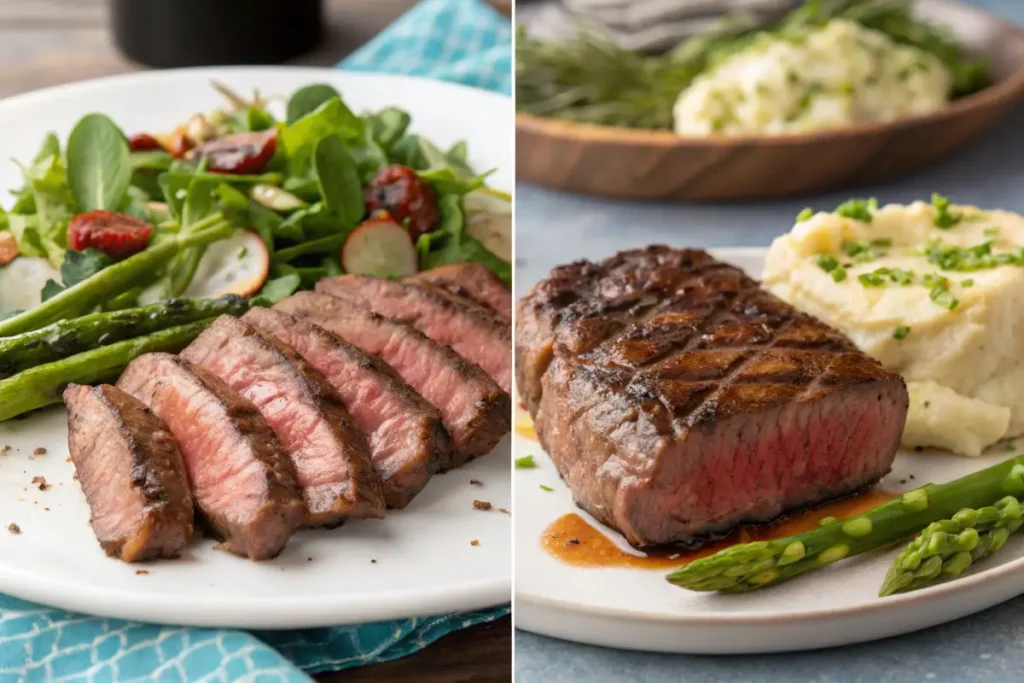
Cooking Tips for Both Cuts
- Let the Steaks Rest: After cooking, allow the steaks to rest for at least 5 minutes. This helps redistribute the juices, ensuring a moist and flavorful bite.
- Use a Meat Thermometer: To avoid overcooking, use a thermometer to check the internal temperature. Aim for 130°F for medium-rare, 140°F for medium, and so on.
- Slice Against the Grain: When slicing the steak, cut against the grain. This shortens the muscle fibers, resulting in a more tender bite.
Why Choose Denver Steak Over Ribeye (Or Vice Versa)?
If you’re stuck between Denver steak and ribeye, it’s worth considering your specific needs, preferences, and the occasion. While both cuts have unique appeal, they shine in different situations. Let’s take a closer look at why you might choose one over the other.
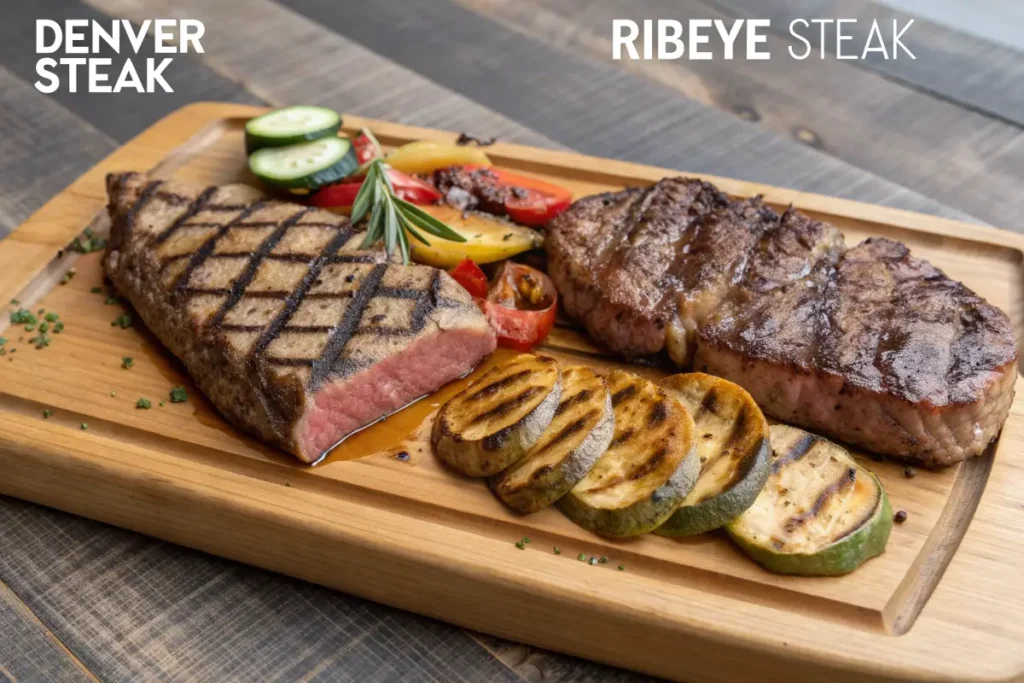
When to Choose Denver Steak
Denver steak is perfect for anyone who loves bold, beefy flavors and is looking for a budget-friendly option. Furthermore, its versatility and tenderness make it a great all-around choice for home cooking. Here are some scenarios where Denver steak stands out:
- You’re Hosting a Cookout on a Budget: Denver steak provides high-quality flavor at a fraction of the cost of ribeye, making it great for feeding a crowd without breaking the bank.
- You Prefer Leaner Steaks: With moderate marbling, Denver steak delivers a flavorful bite without the overwhelming richness of ribeye. Moreover, it’s ideal for those who prefer a meatier texture with less fat.
- You Want a Versatile Cut: Denver steak works wonderfully in various dishes. For instance, it can be grilled for a classic steak dinner, pan-seared for a quick meal, or sliced thinly for use in salads or tacos. Its adaptability is a huge bonus.
Additionally, Denver steak is an excellent introduction for anyone exploring different cuts of beef. Its combination of tenderness, flavor, and affordability makes it an approachable option for home cooks and steak enthusiasts alike.
When to Choose Ribeye
Ribeye, on the other hand, is for those who want a luxurious, melt-in-your-mouth steak experience. Not only is it one of the most popular cuts, but it’s also the ultimate choice for anyone craving indulgence. Consider ribeye if:
- You’re Celebrating a Special Occasion: Ribeye is often seen as the “steakhouse favorite” because of its premium quality and rich flavor. Therefore, it’s ideal for celebrations, holidays, or any indulgent dinner.
- You Love Marbling and Juiciness: With its high fat content, ribeye delivers unparalleled tenderness and a buttery texture. As a result, each bite feels indulgent and satisfying.
- You’re Cooking for a Steak Connoisseur: Ribeye’s reputation as a classic and luxurious steak makes it a go-to for impressing even the most discerning steak lovers.
For those who appreciate decadence in their meals, ribeye is the ultimate choice. Whether grilled to perfection or reverse-seared for maximum flavor, it consistently provides a top-tier experience that steak enthusiasts rave about.
Making the Decision : How does Denver steak compare to ribeye?
If you’re still unsure, think about the occasion, your budget, and the flavor profile you prefer. Denver steak is bold, hearty, and more economical, making it perfect for casual gatherings or everyday meals. Ribeye, on the other hand, is indulgent, tender, and ideal for special moments.
Ultimately, both cuts are excellent in their own right, and neither choice will disappoint. While Denver steak offers great value and versatility, ribeye delivers unmatched tenderness and richness. Whichever you choose, both cuts have the potential to create a memorable meal when prepared with care.
Denver Steak vs Ribeye: Which One Should You Choose?
How does Denver steak compare to ribeye when it comes to flavor, tenderness, and value? Both cuts are excellent choices, but they cater to different tastes and occasions. For example, Denver steak is perfect for those who want a bold, beefy flavor without spending too much. In contrast, ribeye is ideal for steak lovers who prefer luxurious marbling and a buttery texture.
Additionally, Denver steak works well for weeknight meals or casual gatherings because of its affordability and versatility. On the other hand, ribeye is often reserved for special occasions due to its premium price and rich flavor. While both steaks are delicious, choosing the right one depends on your preferences and cooking plans.
In summary, Denver steak and ribeye each offer something unique. Whether you’re grilling for a crowd or treating yourself to a restaurant-quality meal, understanding how Denver steak compares to ribeye can help you make the perfect choice.
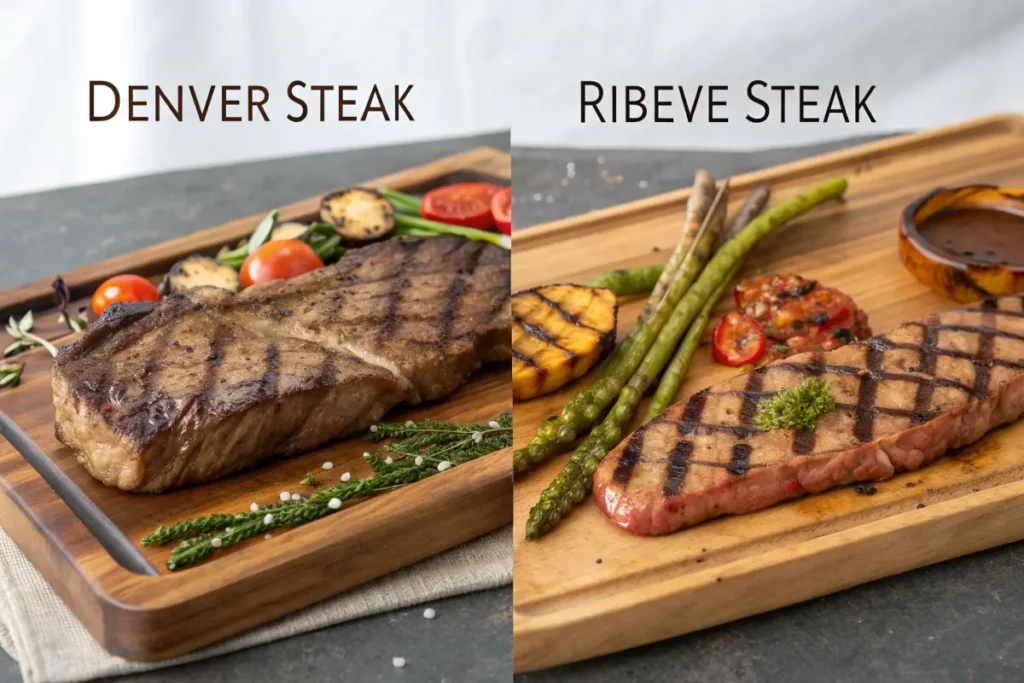
FAQs About How does Denver steak compare to ribeye?
Yes, Denver steak is a great cut of steak. It’s tender, flavorful, and affordable, making it a hidden gem for both grilling and pan-searing enthusiasts.
Denver steak is somewhat similar to flat iron steak. Both cuts come from the chuck and are tender with bold, beefy flavors, but Denver steak is slightly chewier.
The New York strip has more marbling and is leaner, while Denver steak has moderate marbling and a beefier flavor with a slightly firmer texture.
No, Denver steak and hanger steak are not the same. Hanger steak is fattier with a stronger flavor, while Denver steak is leaner and more tender.
Denver steak can be chewy if overcooked. To prevent this, cook it to medium-rare and always slice against the grain to shorten the muscle fibers.
The ribeye is considered the most flavorful steak due to its high marbling. However, cuts like picanha and Denver steak are also rich in beefy flavor.
Denver steak is leaner and more affordable than ribeye. While ribeye is richer and more tender, Denver steak offers bold flavor with less fat.
Denver steak is best enjoyed medium-rare. Slice it thinly against the grain to maximize tenderness and pair it with a simple seasoning or sauce.
Chuck eye steak is a great alternative to ribeye. It offers similar marbling and flavor but comes at a much lower price point, making it budget-friendly.
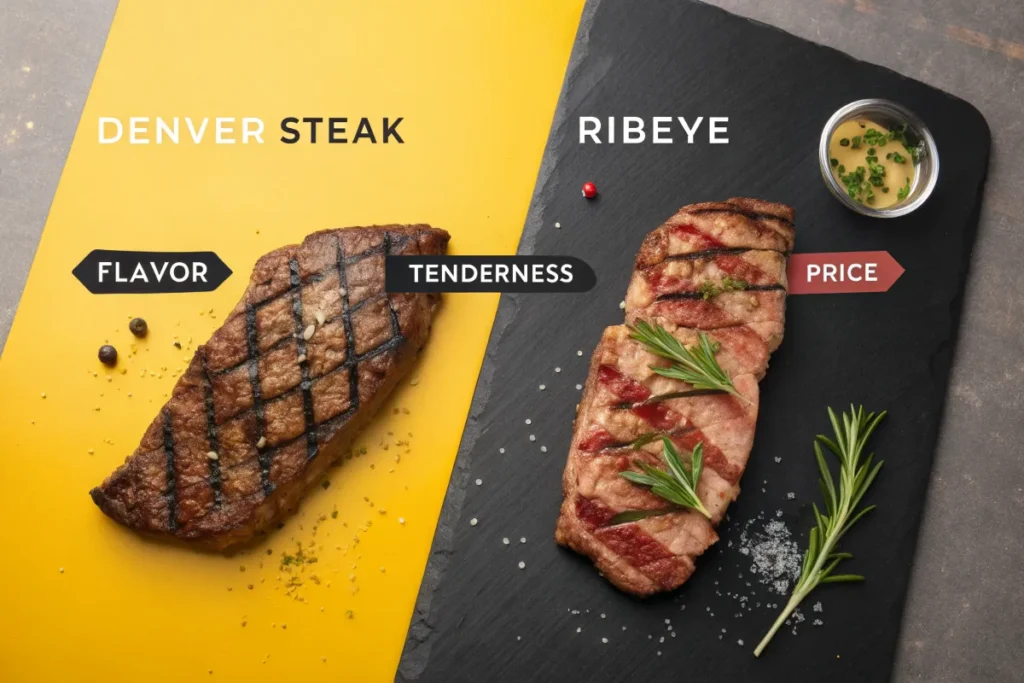
Conclusion: How Does Denver Steak Compare to Ribeye?
In conclusion, understanding how Denver steak compares to ribeye can help you make the perfect choice for your next meal. While both cuts have their unique strengths, Denver steak is a fantastic option for those who prefer bold, beefy flavors at a lower cost. Its affordability and versatility make it a hidden gem, especially for weeknight dinners or experimenting with different cooking techniques.
On the other hand, ribeye stands out for its luxurious marbling and buttery tenderness. For anyone wondering how Denver steak compares to ribeye, the ribeye is the clear choice for those seeking a premium, indulgent experience. Whether you’re grilling for a special occasion or enjoying a steakhouse-style meal at home, ribeye delivers unmatched flavor and texture.
Moreover, the difference in price makes how Denver steak compares to ribeye an important consideration. Denver steak is more budget-friendly while still offering plenty of flavor and tenderness. However, ribeye is worth the splurge when you’re in the mood for something truly decadent.
To summarize, how Denver steak compares to ribeye depends on your priorities. Whether you choose the bold and affordable Denver steak or the rich and tender ribeye, both cuts can be prepared to deliver exceptional results. By knowing the key differences, you can confidently select the steak that best fits your taste, budget, and occasion.

